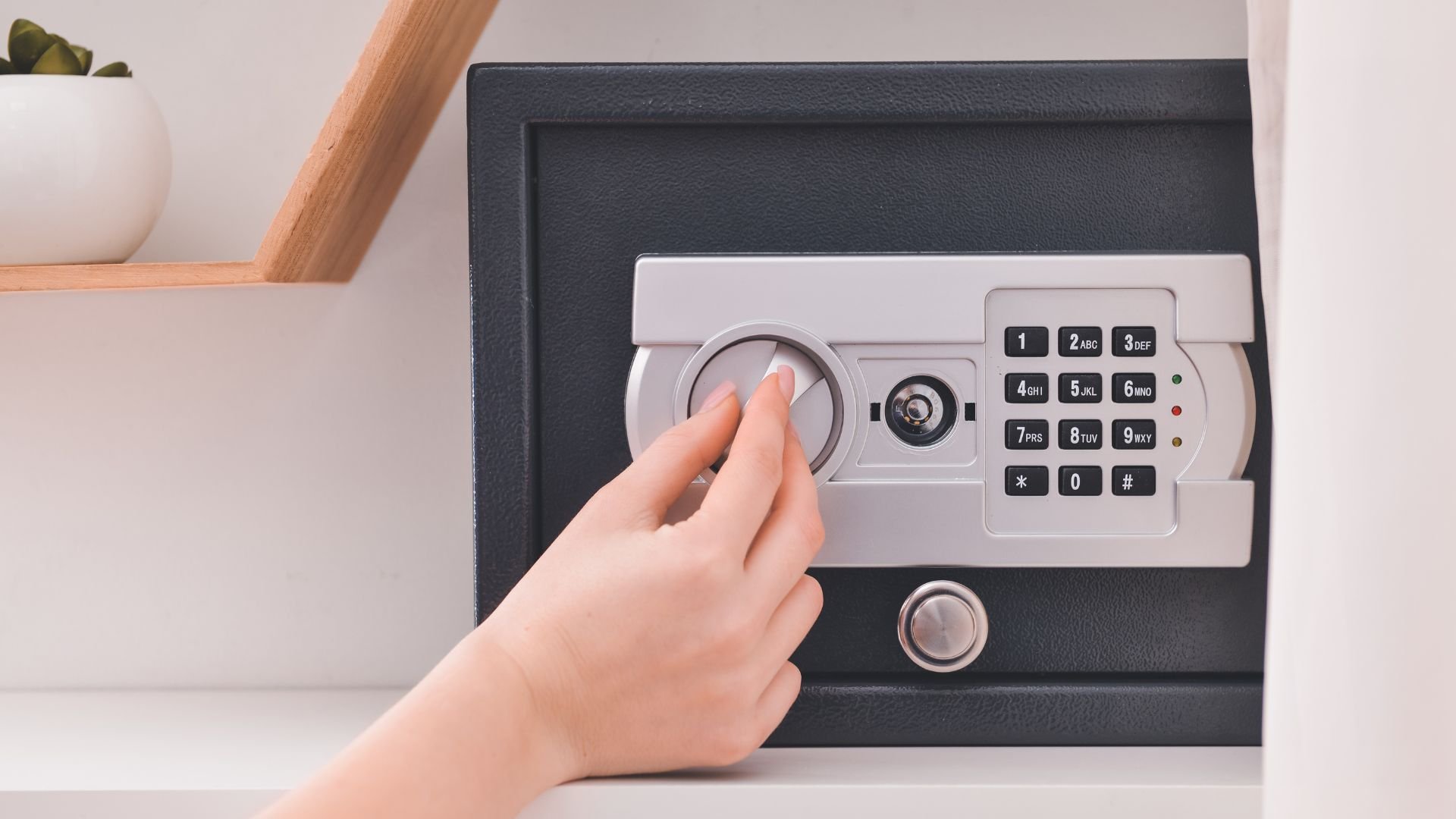Protect your valuables with a home safe
Protect jewelry against burglars, keep photo albums safe in case of fire or secure your most important documents with a safe at home.
The right safe protects against theft, fire and much more. By keeping important documents or other valuables in a safe, you can be sure that they are safe if something happens.
What exactly you store in the safe affects the location and the type of safe. If you store documents or antique jewelry that you rarely use, you can hide the safe further away; behind a sofa or the skirting board of a kitchen cupboard for example. You can also consider a larger safe.
However, if you need a place for some cash or valuable jewelry that you use daily or weekly, it is better to have a sturdy safe in an accessible location for easy access. Think of a safe under your bed or in your walk-in wardrobe.
A built-in safe or a freestanding safe
Built-in safes are difficult to install, so many people opt for a freestanding safe. In principle, there is nothing wrong with that. They are easy to install and if something breaks, they can be replaced or repaired.
If space and discretion are important to you, a built-in safe is likely the best choice. If you need more space and want easy access, a freestanding safe may be a better option.
5 types of safes at home
Wall Safe: This is a safe built into the wall of your house. They are usually small and often used for storing valuable jewelry or documents. A wall safe is well hidden and hard to find. In addition, they take up little space. The disadvantages are that they are usually quite small and difficult to install.
Floor safe: As the name implies, this is a safe that is built into the floor. They are often larger than wall safes and are used for storing larger valuables. A floor safe usually offers more space. Here too, it remains a disadvantage that they are difficult to install.
Suitcase safe: This is a safe made in the shape of a suitcase and can usually be stored on a suitcase rack in a closet or under a bed. You can easily take it with you and it does not stand out.
Fire safe: This is a safe specially designed to protect against fire and sometimes other natural disasters. They are usually larger than other types of safes and are used to store important documents and valuables. In most cases, a fire safe is not meant to protect items against theft.
Electronic safe: This is a safe that can be opened using an electronic lock. They are easy to operate and often offer additional security through PIN codes or biometric scanners.
Are you looking for a new wardrobe, and do you want to install a safe right away? Have a look at the Grottendieck Bezuidenhout custom built wardrobes and make an appointment right away!
The best place for a safe in the house
The golden rule for the best place to build a safe is simple: find a place that is easy for you to reach, but difficult for others to find. This way you keep the safe accessible while keeping its contents safe.
When choosing the right location for your safe in your home, you should therefore take into account:
Access: you choose a location that is easy to reach, but at the same time hidden or difficult to find for others.
Security: Choose a location that is safe and not easy to force or manipulate. For example, avoid locations close to windows or doors that are easy to force.
Stability: Make sure the safe is firmly anchored and not easy to move. Most safes are anchored to the wall, or even the floor.
Discretion: Choose a location that is not conspicuous and where it is not obvious to hide a safe.
A few examples of good locations for a safe are:
In a built-in cupboard, perhaps with a hidden compartment,
Hidden in a wall or floor behind a painting, bookcase or piece of furniture,
In an enclosed space, such as a basement or locked room,
In a hidden niche or alcove.




